vgthought.com
Koopa Shell Deception
Posted: 2014-03-06 22:36:46
Last edited: 2014-03-06 22:51:14
Originally posted here: Spiderduck Network
Last edited: 2014-03-06 22:51:14
Originally posted here: Spiderduck Network
This was originally published on Galactic Gaming News (which later became the Spiderduck Network) on September 12, 2012.
Nothing major here, just an example of deception. When a game actively defies what the player has come to expect, the result can either be frustrating or entertaining. At the time, I felt games criticism had too much focus on how to help a player play. Actively defeating that process can be fun, too.
I ought to note that the screenshots here were taken from the Super Mario All-Stars version of Super Mario Bros.
Nothing major here, just an example of deception. When a game actively defies what the player has come to expect, the result can either be frustrating or entertaining. At the time, I felt games criticism had too much focus on how to help a player play. Actively defeating that process can be fun, too.
I ought to note that the screenshots here were taken from the Super Mario All-Stars version of Super Mario Bros.
Games discussed:
Super Mario Bros.
Deception is entertaining. I love a good plot twist, and that has its roots in deception: youíre set up to expect one plot event, but another happens. When you teach someone to expect one thing and give them another thing, thatís deception.
Deception is a key part of games, too, but I find it hard to see most times. The deception employed in Super Mario Bros. has a lot of clarity to it, and that lends to the gameís personality.
Before I get to the main topic at hand, Iíd like to go over one of the more interesting bits about scoring in Super Mario Bros., using world 3-1 as an example. As you can see here, Marioís about to jump on a koopa.
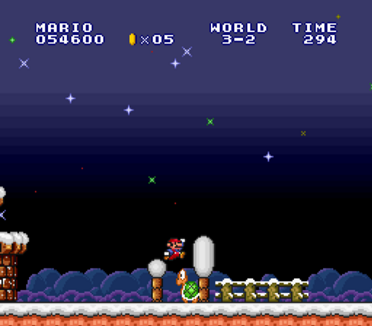
You can kick it to send it into other enemies. The shell moves pretty fast, so you have to run after it at full speed.
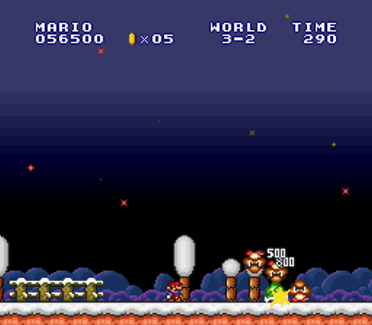
As you hit more enemies, you earn more points per kill.
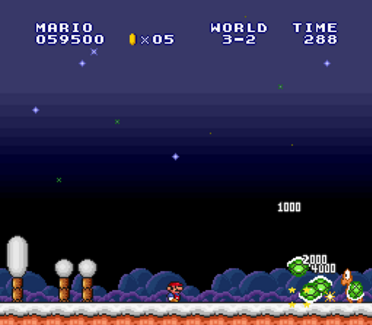
The score is up to 4000 here. The score maxes out at 8000, and after that,
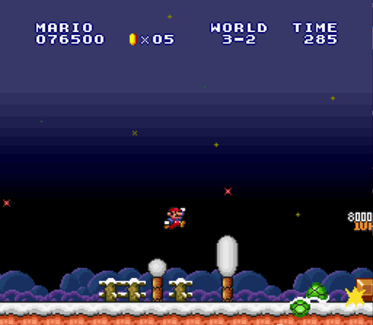
the shell hits a block and hurtles back towards Mario.
I know this game far better than I ought to, and you can tell it by this last screenshot. I knew that the shell was going to bounce back at me right after it scored a 1-up, so I jumped in advance. Thatís because this moment scarred me as a child and left me with muscle memory to handle one particular scenario in an NES game from 1985.
But no, think about it. After you kick the turtle shell, youíre chasing after it at top speed. Itís all you can do to keep the darned thing onscreen. If it despawns, youíve lost your chance at a 1-up. Heck, even beyond that, itís just a really neat trick to pull off. So youíve got the motivation to run blindly after the shell.
What does Super Mario Bros. do now that itís convinced you to run after this shell? Why, it bounces that shell right back at you. While itís certainly possible to dodge the shell on reflexes alone, itís much harder when Mario is sprinting forward as fast as he can.
The game sets you up with an expectation. Youíve got a string of enemies, all lined up to get taken out by the shell. You plan to just follow along and see how many bad guys the shell runs over. Thatís where the deception comes in: you never expect the shell to run YOU over. Or, to put it another way, when the shell reverses directions, your expectations are reversed.
The game does give you another chance at a 1-up towards the opening of 8-1, though.
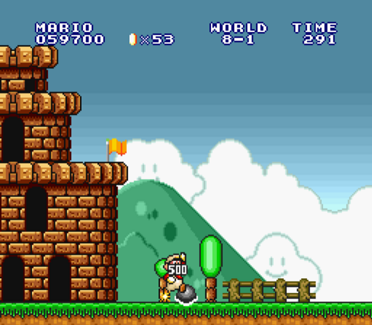
This time, you might remember that the shell bounced after you earned a 1-up.
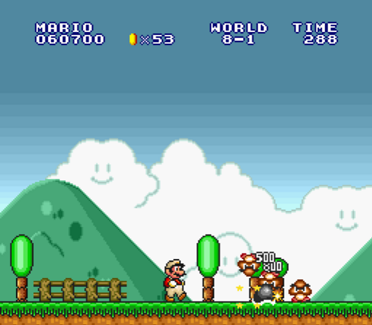
So, youíll be prepared to jump as soon as you get the free life.
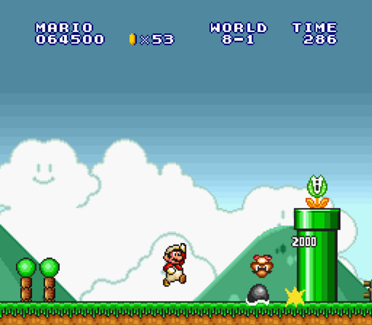
Well, it wouldnít be deception if you knew what to expect.
Like I said, games employ deception often enough, but they donít usually have the guts to ruin your day like Super Mario Bros. does. And hey, it lends Super Mario Bros. character, but I donít know if I like my day being ruined.
...Most of the time.
comments powered by Disqus
All original content on VG Thought was written by Greg Livingston AKA Golem.